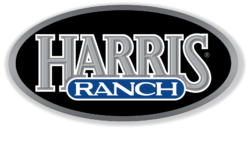State-of-the-art Beef Processing
In recent years, Harris Ranch invested more than $90 million into facility upgrades, making Harris Ranch Beef Company one of the most advanced plants in the nation. This expansion enabled us to increase processing capacity to between 1,050 and 1,150 head of cattle per day in a single shift.
Our state-of-the-art harvest floor incorporates the latest technologies in sanitary dressing and improved ergonomics throughout the facility.
Our carcass coolers allow for superior cold chain management and our electronic carcass-grading camera provides consistent carcass grading results.
Refrigeration units circulate chilled air at high velocities in conjunction with spray-chill application to chill hot beef carcasses. After initial chill, carcasses are staged under refrigeration until transfer to the refrigerated Fabrication floor.
Carcasses are processed into finished subprimal products and are vacuum packaged and boxed, also under refrigeration. Sealed cases are transferred to the refrigerated Boxed Warehouse until shipment in a temperature-controlled trailer that has been pre-chilled prior to loading.
Throughout the production, packing, and storage process, environmental room temperatures are electronically monitored with alarm thresholds to notify pertinent personnel if temperatures are out of range.
Harris Ranch owns and operates a fleet of tractors and trailers. We recently upgraded a large portion of our fleet to liquefied natural gas, making them near-zero-emission vehicles. All trailers leaving our processing facility are equipped to electronically monitor temperatures and send automatic alerts if a threshold is exceeded.
Download our commitment to animal welfare.
